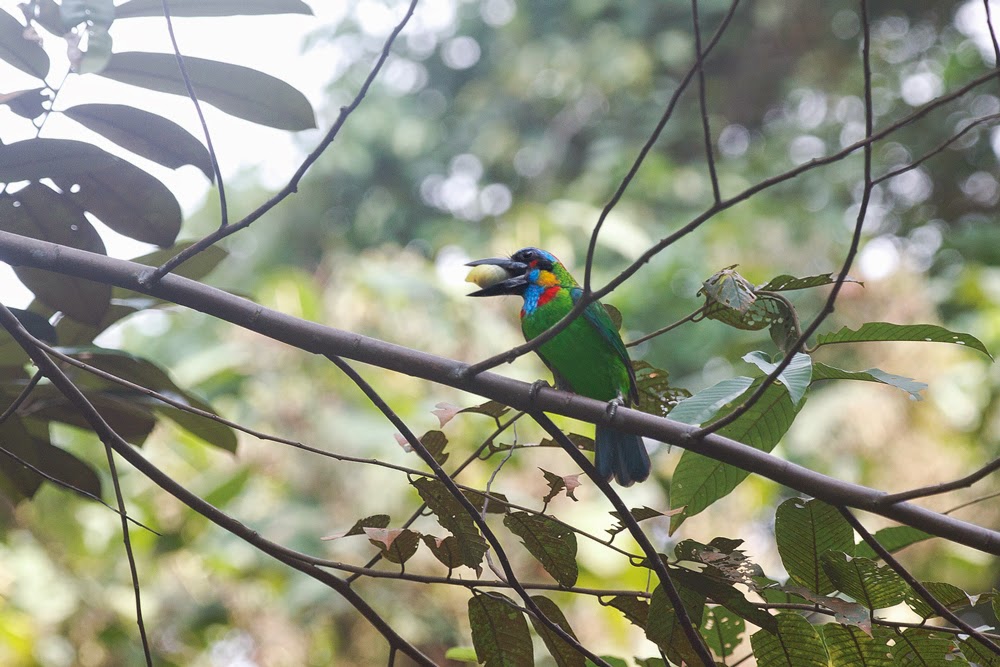Barbets are some of the most colourful forest birds in South East Asia, with splashes of red, green, blue and yellow on their heads. They are distant relatives of the toucans and like them, their diet is largely fruit based. Somewhere along the line of Singapore's industrialisation, most of our barbets went extinct and now there are only three extant species surviving. I have seen two of them recently. This is the first, the Coppersmith Barbet.
The coppersmith barbet is by far the commoner species and it lives in parks and gardens.It is a small bird, about 16cm in length, with a disproportionately chunky bill. The word 'barbet' comes from the barb like bristles at the base of their beaks. It is a dark turquoise-green bird with patches of yellow and red on its face. This one was observed bringing food to its nest hole on the underside of a branch.
Every ten minutes or so, one of the parents would fly in and deliver berries. The chicks were rather old already, for younger chicks are fed with more insects. The nest is in the centre of the picture below.
It was very thrilling to watch the chick's head pop out from the nest each time the parent came by to feed it. From afar this bird is actually difficult to spot due to its predominantly green plumage and its habit of sitting still for long periods of time. It is much more often heard than seen, its call being a continuous tunk tunk tunk that has been likened to the sound of a coppersmith at work.
The next barbet is our sole forest barbet, the Red Crowned Barbet. It has an even more pronounced Quattron-colour scheme but is still well camouflaged in the forest canopy. It is a much larger bird, usually about 27cm in length, mainly apple green with its head adorned with bright blue, red and yellow. It has the same bristles as the coppersmith barbet. I encountered this one along a forest trail.
I initially thought it was trying to swallow a large unripe berry but then realised that it was eating an arboreal snail! This barbet has been known to take a wide variety of food items. However, it is strictly a forest dweller and is restricted to the Central Catchment and Bukit Timah nature reserves. Here is a closer view.
This barbet frequents areas with dead trees because they prefer to nest in soft rotting wood. There are very few nesting records and I believe there have only been two in Singapore; one in 1979 and one in 2006. Like all barbets, they are drawn to fruiting trees, especially fruiting figs. I was lucky to see this one just above my eye level; they are known to be canopy feeders and rarely descend to the middle storey of the forest.
The last of Singapore's three barbets, the Lineated barbet, is not so colourful, being brown and streaky, with green wings and belly and a patch of bare yellow facial skin. It is a rather new bird here which spread from Indonesia in the late 1900s. I unfortunately do not have any pictures of it. So there we have it, the RBGY birds.
References:
Barbets of Singapore Part 2, by Raffles Museum of Biodiversity Research
Barbets of Singapore Part 3, by Raffles Museum of Biodiversity Research
Two brilliantly comprehensive studies of the coppersmith and red crowned barbets
respectively, from which I learnt all I now know about barbets.































